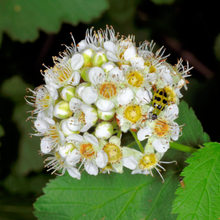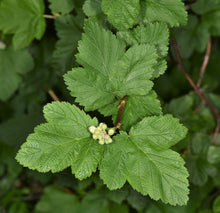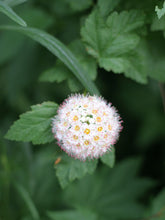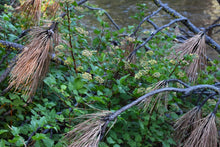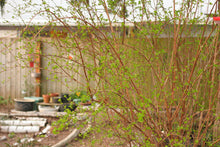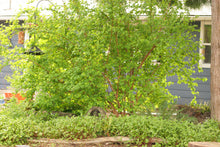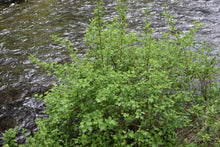
Physocarpus capitatus
Pacific ninebark is a large deciduous shrub, with an attractive full form, named for its reddish peeling bark. Small, showy clusters of white flowers appear in late spring and provide a treasure trove for native insect pollinators. Due to it's size and plentiful blooms, ninebark one of the best native plants for bringing butterflies to the garden. In the late season, the flowers mature into reddish brown capsules and the leaves assume pleasant fall colors.
- Plant type/canopy layer: deciduous, perennial, large shrub
- Size at maturity: 8-16' tall, 4-7' wide
- Light requirements: full sun, part sun/part shade
- Moisture requirements: moist to seasonally wet soil
- Bloom time: May - August (May - June in the Portland Metro area)
- Growth rate/ease: fast growing, easy to grow
- Wildlife support: flowers attract and provide nectar to adult butterflies, bees and other insect pollinators; fruits are an important food source for many species of native birds; overall plant attracts and supports beneficial and pest eating insects and is a caterpillar host plant and larval food source for native butterflies and moths
- Native habitat/range: common in riparian and moist forest habitats of western North America from southern Alaska to southern California, and east to Montana and Utah. Portland Plant List - yes.
- Special features & uses: butterfly favorite; controls erosion; landscape uses include pollinator gardens, raingardens/bioswales, and woodland gardens
Gardening with Pacific Ninebark: Ninebark thrives in moist, part-to-mostly sunny environments, like a raingarden or bioswale, that mimic the riparian forest edge where it naturally finds home. It also is excellent for stabling slopes and controlling erosion.
Photo Credit 1: "Pacific ninebark Physocarpus capitatus" by loarie is licensed under CC BY 2.0
Photo Credit 2: "Pacific ninebark Physocarpus capitatus" by loarie is licensed under CC BY 2.0
Photo Credits 3, 5, 6: Karli Del Biondo, Beetles and Bees
Photo Credit 4 & 7: Nikkie West, Sparrowhawk Native Plants







